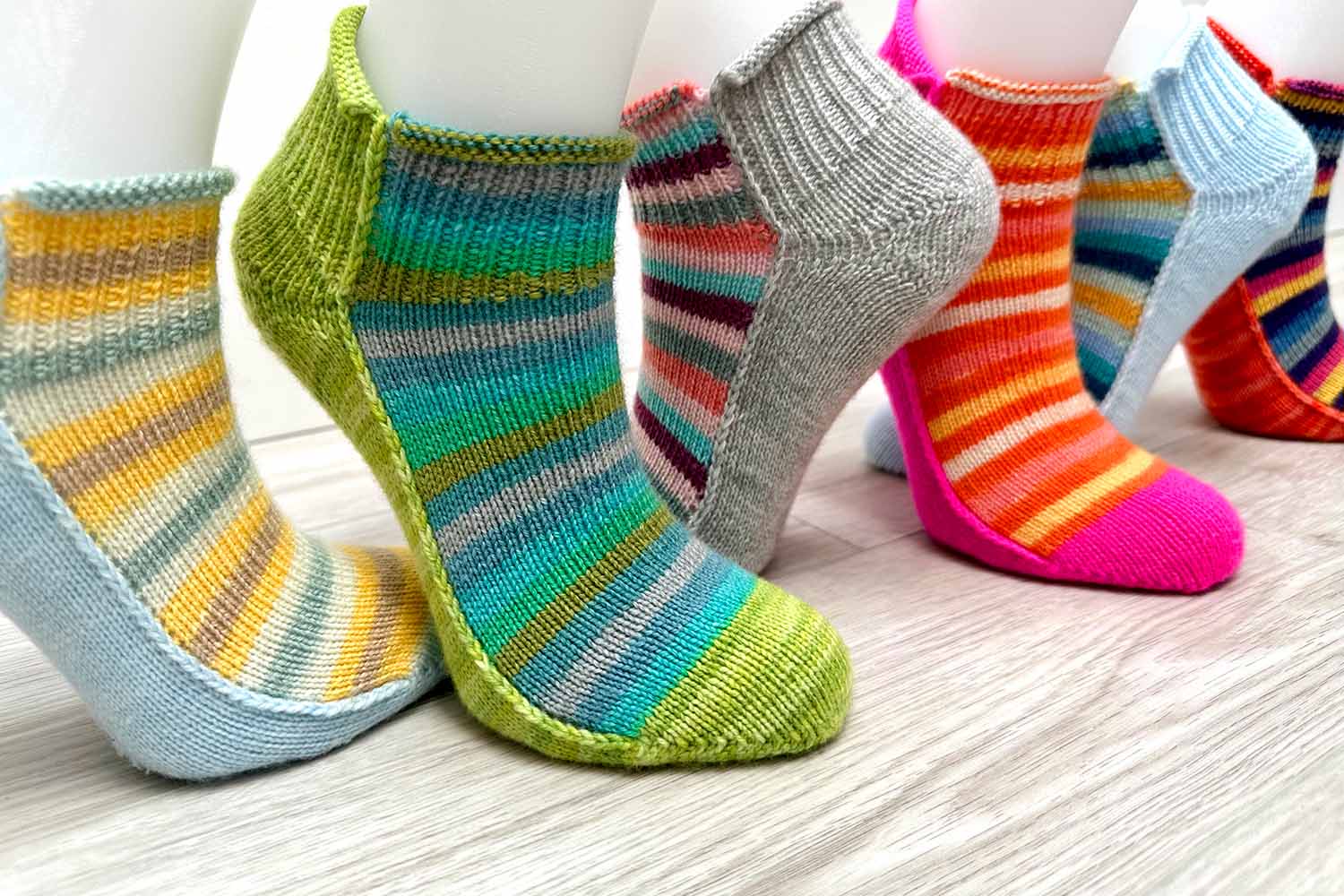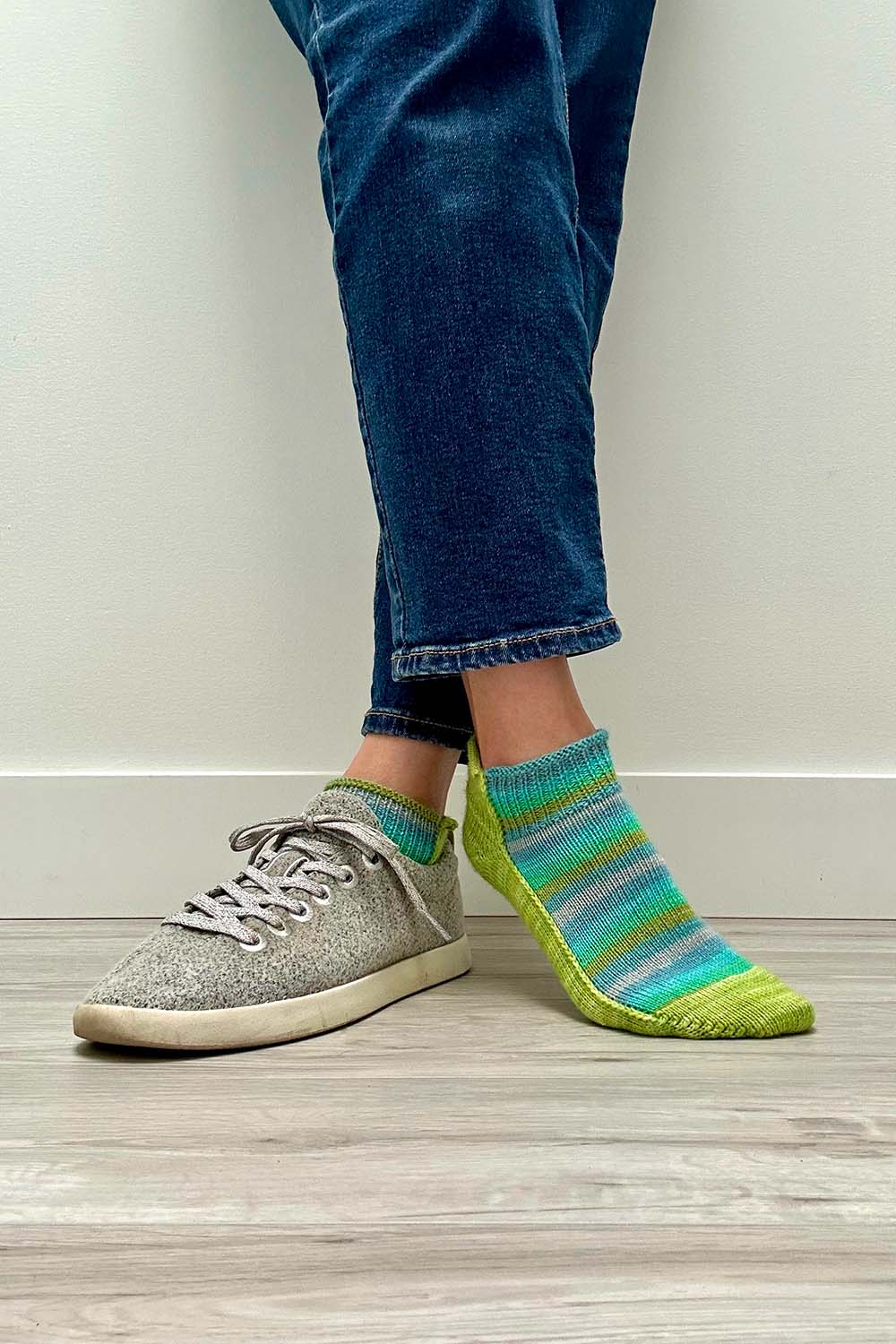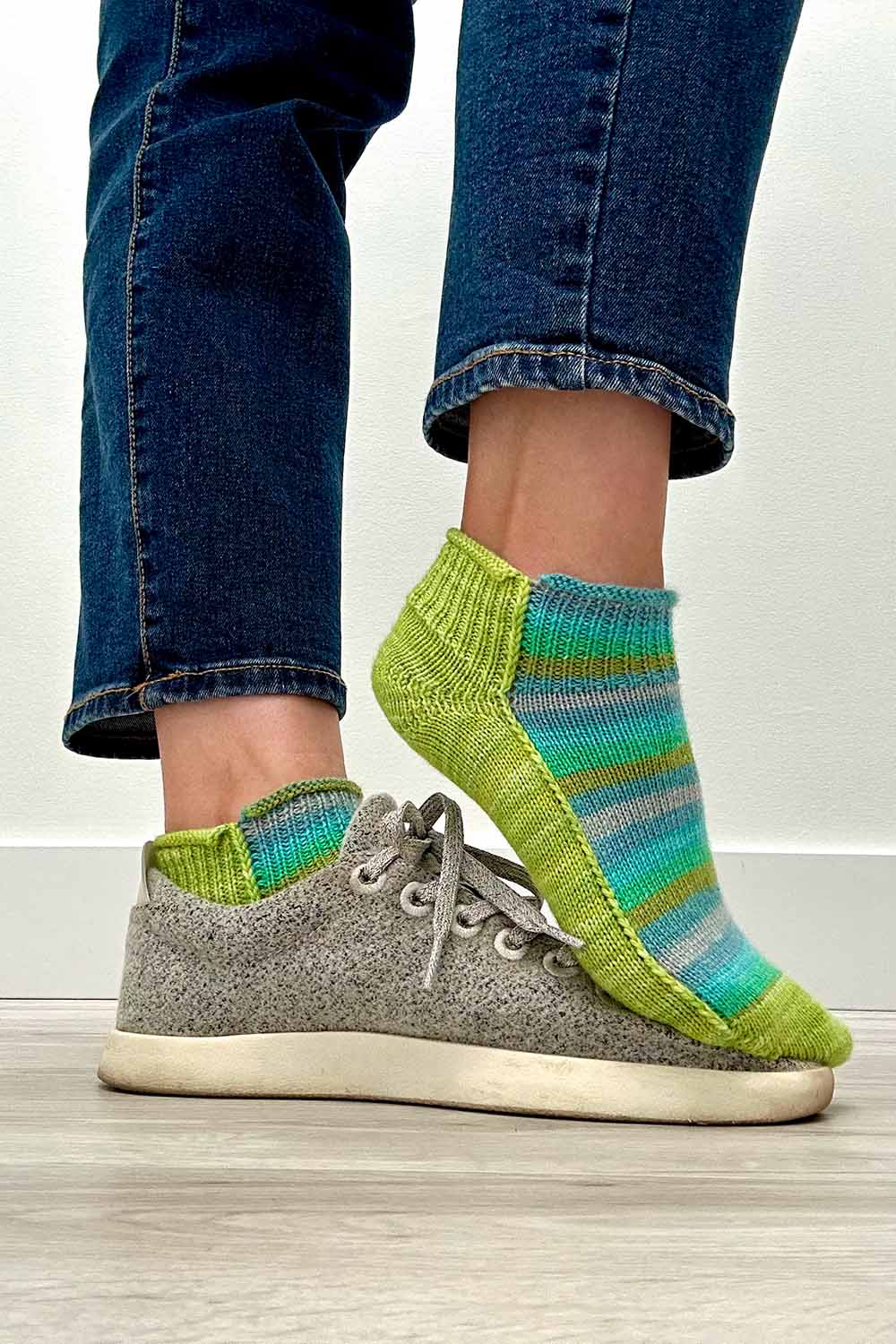Over Easy Socks
$10 CAD
Knit flat on two needles, these shortie socks are quick to complete: cast on after breakfast; bind off after lunch! Knit flat from cuff to toe and back again, these join-as-you-go socks provide opportunities to add attractive colour changes and sturdier yarn for high traffic soles.
Also available on
Share
Construction
Over Easy socks are knit flat and use short row shaping to create the cozy toe and heel. Slipped stitches and clever joins along the side provide a seam-as-you-go option that is easy to execute. The bifurcated heel with its short row gusset provides a more comfortable fit across the instep as well as greater heel depth on the back of the foot. These short socks stay up!
The Bifurcated Short Row Heel was inspired by commercial sport socks with a Y-shaped line of short row shaping on the heel. The bifurcated heel shaping creates a gusset that results in a deeper heel, raising the back of the sock for a more comfortable fit than a standard short row heel. It also provides more ease across the instep, which is notoriously tight on socks with short row heels. It’s an excellent heel for people with a high instep.
What's Included
This knitting pattern includes detailed written directions, front and back images, assembly diagram, sizing advice for gift knitters, and adjustable foot/leg length.
Sizes + Finished Measurements
Baby S (Baby L, Toddler S, Toddler L, Child S, Child L)(Adult XS, S, M, L, XL).
Finished foot circumference: 3 ¾ (4 ¼, 4 ¾, 5 ¼, 5 ¾, 6 ½)(7 ½, 8 ½, 9 ½, 10 ¼, 11 ¼)” / 9.5 (11, 12, 13.5, 14.5, 16.5)(19, 21.5, 24, 26, 28.5) cm.
Foot and leg length are adjustable to preference. Meant to be worn with approx 10% negative ease. Choose a finished size about ½”/1.5 cm (smallest sizes) to 1¼”/3 cm (largest sizes) smaller than foot circumference measured around ball of foot.
Yarn
Fingering weight or sock yarn in two colours (self-striping and solid);
MC 30 (35, 40, 50, 60, 70)(90, 110, 130, 160, 185) yd / 25 (35, 40, 45, 55, 65)(85, 100, 120, 145, 170) m;
CC 55 (65, 75, 90, 110, 135)(180, 220, 270, 325, 380) yd / 50 (60, 70, 85, 100, 125)(165, 200, 245, 300, 350) m.
Shown in Knit Picks Felicini (75% Superwash Merino Wool, 25% Nylon; 437 yards/100g): 1 ball Nessie (MC)
AND
Knit Picks Stroll Tonal (75% Superwash Merino Wool, 25% Nylon; 231 yards/50g): 1 skein Kiwi.
Substitution Notes
This pattern uses two colours but they don’t have to be the same fibre blend or brand, as long as they’re fingering weight and result in a similar gauge (you can even use different needle sizes for each colour, if needed to get gauge). The top of the sock can be knit using a luxe yarn you may not usually consider for a sock; think a cashmere blend, 100% merino, or that precious skein you’ve been saving. For the sole, choose a fingering weight sock yarn. Look for a tight twist, multiple plies for a sock that will last. A wool blend with nylon, mohair or silk makes for a sturdy yarn.
Gauge
34 sts and 48 rnds = 4″ (10 cm) in Stocking Stitch worked flat, washed, and laid flat to dry.
Needles + Notions
2.25mm (US 1) needle(s) for working flat, choice of two dpn, circular, or straight needles, or size to obtain gauge.
Two 2.25mm (US 1) dpn for I-cord on baby sizes (optional).
Locking stitch markers;
Stitch markers;
Yarn needle;
Blunt yarn needle (optional; for baby sizes).
Skills
Shadow wrap short rows (instructions included), short row toe, short row heel, modular join as you go technique.
Related Tutorials
Long Tail Cast OnRaised Increases Photo Tutorial
Raised Increases Video Tutorial
Shadow Wrap Short Rows
Cast On Too Tight?
Estimate Tail Length for Cast On










